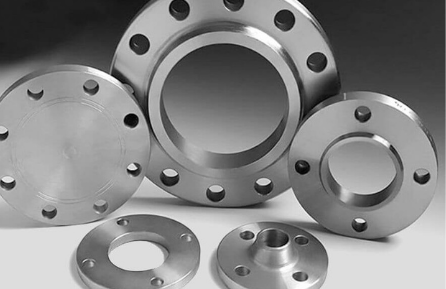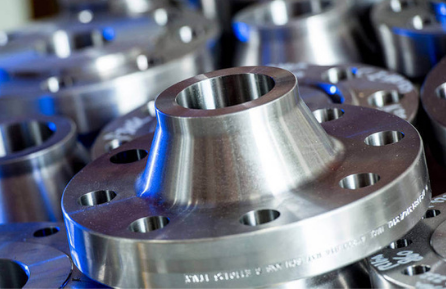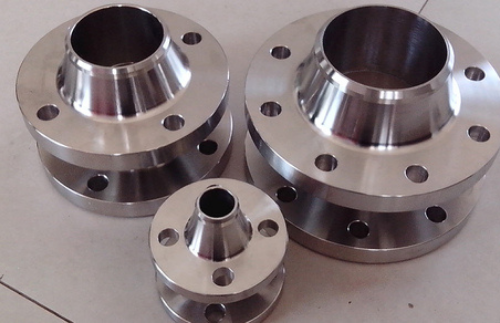Stainless Steel Flanges
Stainless Steel Flange Manufacturer
Stainless Steel Flanges Manufacturers, Stainless Steel Flanges Manufacturers in India, SS Flange Types, Stainless Steel Flanges UK, Stainless Steel Flanges Australia, Stainless Steel Flanges South Africa, Stainless Steel Flanges NZ, Stainless Steel Flanges Singapore, 304 Stainless Steel Flanges, 316 Stainless Steel Flanges, Slip on Stainless Steel Flange.
B16.47 SS Blind Flanges, ASTM A182 Weld Neck Flange, SS Socket Weld Flange, EN 1092-1 Stainless Steel Threaded Flange, ASME B16.48 Stainless Steel Slip On Flange, ASME Standard For Stainless Steel Flanges, Check Stainless Steel Pipe Flange Price List, Buy From Ansi 150 Stainless Steel Flanges, Carbon Steel flanges, BS4504 SS Plate Flange, ANSI B16.5 SS Pipe Flange And Forged Flange Suppliers At Factory Price.
Newzel Industries is a stainless steel flange manufacturer specializing in ASME code stamped products. We offer both custom and standard options to meet your needs. Our team of experts can answer any questions you may have about our products or the application process. Contact us today to learn more!
Stainless Steel Flanges Specifications
| Specifications | Stainless Steel Flanges |
|---|---|
| ASME B16.5 Stainless Steel Flanges size range | 1/2″ (15 NB) to 48″ (1200NB) DN10~DN5000 |
| Stainless Steel Flanges Standards | ANSI/ASME B16.5, B16.47 Series A & B, B16.48, BS4504, BS 10, EN-1092, DIN, ANSI Flanges, ASME Flanges, BS Flanges, DIN Flanges, EN Flanges, GOST Flanges. |
| Stainless Steel Flanges Standard ANSI | Class 150 LBS, 300 LBS, 600 LBS, 900 LBS, 1500 LBS, 2500 LBS |
| Stainless Steel Flanges Standard DIN | 6Bar 10Bar 16Bar 25Bar 40Bar / PN6 PN10 PN16 PN25 PN40, PN64 |
| Stainless Steel Flanges Standard JIS | 5K, 10 K, 16 K 20 K, 30 K, 40 K, 63 K |
| Stainless Steel Flanges Standard UNI | 6Bar 10Bar 16Bar 25Bar 40Bar |
| Stainless Steel Flanges Standard EN | 6Bar 10Bar 16Bar 25Bar 40Bar |
| Main Types | Forged / Threaded / Screwed / Plate |
| Flange supporting material | Gasket, Ring Joint, Flange Bolts |
| Stainless Steel Pipe Flanges Test Certificates | EN 10204/3.1B Raw Materials Certificate 100% Radiography Test Report Third Party Inspection Report, etc |
| Most common types of Stainless Steel Flanges |
|
| Production technique |
|
| Connect Type/ Flange Face Type | Raised Face (RF), Ring Type Joint (RTJ), Flat Face (FF), Large Male-Female (LMF), Lap-Joint Face (LJF), Small Male-Female (SMF), Small Tongue, Large Tongue & Groove, , Groove |
| Special design |
As per your drawing AS, ANSI, BS, DIN and JIS Stainless Steel Flanges Threaded Flanges, Socketweld Flanges, Slip-On Flanges, Blind Flanges, Weld Neck Flanges |
| Test | Direct-reading Spectrograph, Hydrostatic testing machine, X-ray detector, UI trasonic flaw detector, Magnetic particle detector |
| Equipment | Press machine, Bending machine, Pushing Machine, electric bevelling machine, Sand-blasting machine etc |
| Origin | Indian / West Europe / Japan / USA / Korean |
| Specialized manufacturer of |
|
| Stainless Steel Flanges Standard |
ANSI DIN, GOST, JIS, UNI, BS, AS2129, AWWA, EN, SABS, NFE etc.
|
| Key markets and industries for Stainless Steel Flanges |
|
| Export to | Ireland, Singapore, Indonesia, Ukraine, Saudi Arabia, Spain, Canada, USA, Brazil, Thailand, Korea, Iran, India, Egypt, Oman, Dubai, Peru, etc |
| Stainless Steel Flanges Application |
|
| Material Test Certificates (MTC) as per EN 10204 3.1 and EN 10204 3.2, Test Certificates certifying NACE MR0103, NACE MR0175 | |
15mm (1/2″) Stainless Steel Flanges Weight Chart
|
Standard
|
Class
|
Diameter
|
Bolt Circle Diameter
|
Number of Bolts
|
Bolt Size
|
Diameter of Bolt Hole
|
|---|---|---|---|---|---|---|
|
AS4087 Flanges
|
PN14 Flanges
|
95
|
67
|
4
|
M12
|
14
|
|
AS 2129 Flange
|
Table C Flanges
|
95
|
67
|
4
|
13
|
14
|
|
Table D Flanges
|
95
|
67
|
4
|
13
|
14
|
|
|
Table E Flanges
|
95
|
67
|
4
|
13
|
14
|
|
|
Table F Flanges
|
95
|
67
|
4
|
13
|
14
|
|
|
Table H Flanges
|
114
|
83
|
4
|
16
|
17
|
|
|
Table J Flanges
|
114
|
83
|
4
|
16
|
17
|
|
|
ANSI B16.5 Flanges
|
ANSI 150 Flanges
|
89
|
60
|
4
|
13
|
16
|
|
ANSI 300 Flanges
|
95
|
67
|
4
|
13
|
16
|
|
|
ANSI 600 Flanges
|
95
|
67
|
4
|
13
|
16
|
|
|
ANSI 900 Flanges
|
121
|
83
|
4
|
19
|
22
|
|
|
ANSI 1500 Flanges
|
121
|
83
|
4
|
19
|
22
|
|
|
ISO 7005 (DIN) Flange
|
PN6 Flanges
|
80
|
55
|
4
|
M10
|
11
|
|
PN10 Flanges
|
95
|
65
|
4
|
M12
|
14
|
|
|
PN16 Flanges
|
95
|
65
|
4
|
M12
|
14
|
|
|
PN20 Flanges
|
90
|
60.5
|
4
|
M14
|
16
|
|
|
PN25 Flanges
|
95
|
65
|
4
|
M12
|
14
|
|
|
PN40 Flanges
|
95
|
65
|
4
|
M12
|
14
|
Size Chart Of SS Flange


What is a Flange ?
A flange is a type of mechanical joint used to connect two pipes or other objects together. Flanges are typically made from metals such as stainless steel or carbon steel, and they come in a variety of shapes and sizes to accommodate different applications. A stainless steel flange manufacturer can produce flanges for use in a wide variety of industries, including oil and gas, petrochemical, chemical, and power generation.
Types of flanges
There are many different types of flanges that are used in piping applications. Some of the most common types of flanges include:
-Weld Neck Flanges: Weld neck flanges are attached to the pipe by welding. This type of flange is often used in high-pressure applications.
-Slip On Flanges: Slip-on flanges are also attached to the pipe by welding. However, this type of flange slides over the end of the pipe before being welded in place.
-Blind Flanges: Blind flanges are not attached to the pipe, but rather they are used to cap off the end of a piping system.
-Threaded Flanges: Threaded flanges are screwed onto the pipe instead of being welded. This type of flange is often used in low-pressure applications.
Materials used in flanges
There are many materials that can be used to create a flange, but stainless steel is one of the most popular choices. Stainless steel is an incredibly strong and durable material, which makes it ideal for use in flanges. It is also resistant to corrosion and can withstand high temperatures, making it perfect for use in industries where these conditions are present. If you’re looking for a reliable and sturdy flange manufacturer, look no further than a stainless steel flange manufacturer.
The manufacturing process of flanges
Flanges are discs or plates with a raised outer edge that are used to connect two pipes or other pieces of equipment together. The manufacturing process of flanges involves cutting and shaping the raw materials into the desired shape, then welding or bolting the flanges together.
There are several different types of flanges, such as weld neck, slip-on, threaded, and lap joint. Each type has a different purpose and is used in different applications. The most common type of flange is the weld neck flange, which is used to connect pipes together in a variety of industries.
The manufacturing process of weld neck flanges begins with cutting the raw material to size. The material is then heated and formed into the desired shape. Once the flange has cooled, it is then welded to the pipe or other piece of equipment.
Slip-on flanges are another type of flange that is commonly used in the piping industry. These flanges are easier to manufacture than weld neck flanges, and they can be used in a variety of applications. The manufacturing process of slip-on flanges begins with cutting the raw material to size. The material is then heated and formed into the desired
Advantages of stainless steel flanges
There are many advantages to using stainless steel flanges in your manufacturing process. They are strong and corrosion-resistant, which makes them ideal for use in harsh environments. Additionally, they are easy to clean and can be reused multiple times.
How to select the right stainless steel flange
There are many factors to consider when selecting the right stainless steel flange for your application. The first is to determine the type of flange that you need. There are several different types of stainless steel flanges, including:
-Socket weld flanges
-Slip on flanges
-Weld neck flanges
-Threaded flanges
Each type of flange has its own advantages and disadvantages, so it’s important to select the one that will best meet your needs. For example, a socket weld flange is easier to install than a weld neck flange, but it is not as strong. Conversely, a weld neck flange is stronger than a socket weld flange, but it is more difficult to install.
Another important factor to consider is the size of the flange. Stainless steel flanges are available in a range of sizes, from small bore sizes up to large bore sizes. It’s important to select the right size for your application to ensure proper fit and function.
Finally, you’ll also need to select the right grade of stainless steel for your application. The most common grades are 304 and 316, but there are other grades available as well. Each grade has its own
















